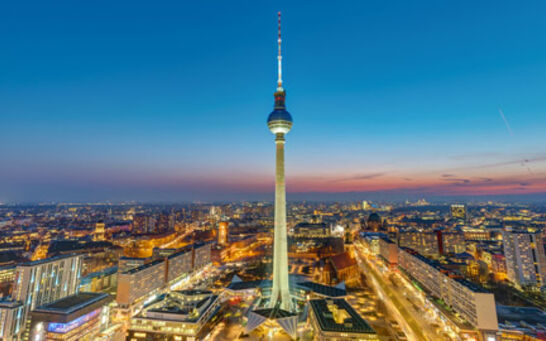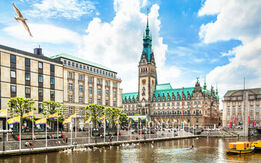Gold rush: the dream of instant wealth
Gold facts & figures Arnulf Hinkel, Finanzjournalist – 20.12.2022
What is a gold rush – and what sparks it? Notable cases of gold fever in California, Colorado, Montana, South Africa, Australia, and Alaska.
 Humans have likely been coveting gold for many millennia – in the form of jewellery, as insignia of power and wealth, store of value and means of payment. An impressive example is the burial site of Varna, which dates to 4500 BC. No later than from 560 BC, gold coins were introduced as currency by the legendary King Croesus. Many ancient traditions speak of places where the valuable precious metal was practically lying in the street, and the Bible mentions the land of gold Ophir. From the 15th century onwards, Spanish soldiers of fortune travelled the oceans in search of Eldorado, city of gold.
Humans have likely been coveting gold for many millennia – in the form of jewellery, as insignia of power and wealth, store of value and means of payment. An impressive example is the burial site of Varna, which dates to 4500 BC. No later than from 560 BC, gold coins were introduced as currency by the legendary King Croesus. Many ancient traditions speak of places where the valuable precious metal was practically lying in the street, and the Bible mentions the land of gold Ophir. From the 15th century onwards, Spanish soldiers of fortune travelled the oceans in search of Eldorado, city of gold.
So why did it take until the end of the 17th century for the first gold rush to occur? Looking back, the most famous gold rushes from today’s perspective took place in the 19th century. To understand the late emergence of the mass, and often spontaneous, hunt for the precious metal, which frequently lacked any form of organization or strategy, it helps to consider the required dimensions for a gold rush to qualify as such. During the California Gold Rush, for example, more than 80,000 people settled in the state within a single year. The number San Francisco residents grew 25-fold within less than two years.
For immigration movements of this scale to occur within a short period of time, two preconditions were necessary which simply did not exist previously. First, extensive means and routes of transport had to be in place to move great numbers of people within a short period of time. Secondly, supra-regional information and communication structures provided the means to quickly reach hundreds of thousands of people. Furthermore, poverty and famine were ravaging many parts of the world in the 19th century, increasing motivation to risk the potentially life-threatening hunt for gold based on mere rumours about large gold deposits.
European gold fever
The first – and to this day only – gold rush in Europe evolved slowly. In the Finnish part of Lapland, small quantities of gold had already been found in the 1830s. The number of gold seekers remained manageable until reports of larger finds fuelled the influx of people seeking quick wealth, further exacerbated by the Finnish famines of 1866 and 1868. During the famines, 10 per cent of the population died, and the discovery of gold gave the desperate survivors a glimmer of hope for a better future.
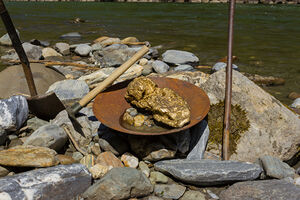 However, large numbers of gold seekers ended up as cheap labour for wealthy, large-scale operators who brought the necessary capital for tools and means of transport. The centre of the Finnish gold rush was the region around the town of Nulkamukka on the river Ivalojoki. Initially completely uncontrolled, mining was legalised in 1870 by Tsar Alexander II. to increase tax revenues. What followed was the peak of the European gold rush. While the gold fever in Lapland soon subsided, around 20 kg of gold is still mined in Finland every year. And, in contrast to gold from large mining areas, Finnish gold nuggets are worth even more unprocessed than melted into bars. They are usually worked into jewellery directly from their raw nugget form.
However, large numbers of gold seekers ended up as cheap labour for wealthy, large-scale operators who brought the necessary capital for tools and means of transport. The centre of the Finnish gold rush was the region around the town of Nulkamukka on the river Ivalojoki. Initially completely uncontrolled, mining was legalised in 1870 by Tsar Alexander II. to increase tax revenues. What followed was the peak of the European gold rush. While the gold fever in Lapland soon subsided, around 20 kg of gold is still mined in Finland every year. And, in contrast to gold from large mining areas, Finnish gold nuggets are worth even more unprocessed than melted into bars. They are usually worked into jewellery directly from their raw nugget form.
America – continent of unlimited gold rushes
For most people, the idea of the gold rush is inseparably linked with the US, where the most famous mass events of this kind occurred. And although a number of books and movies are based on them, the very first great gold rush on the American continent at the end of the 17th century happened much further south, where, in the 1980s, the last great gold rush to date also reached its climax.
Brazil: scene of two major cases of gold fever
In 1693, an expedition of more than 1,000 men of the Bandeirantes, a Brazil paramilitary organisation of several thousand men, came upon gold deposits near the present-day state of Minas Gerais west of Rio de Janeiro. Almost 500,000 people soon set out to dig for gold in the region. Many were forced labourers, African slaves, and indigenous people. Due to its large-scale gold mining, Brazil became the world’s largest gold exporter in a very short time, with 10 to 15 tonnes of the precious metal shipped to Europe annually. Over the 18th century, an estimated 900 tonnes of gold were exported.
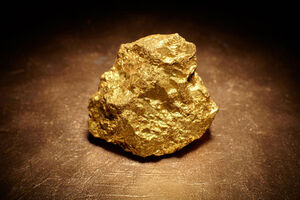 The second Brazilian gold rush was the largest in Latin America and remains one of its last. The village of Sierra Pelada off the low mountain range of northern Brazil attracted nearly one million, predominantly of the so-called landless workers from the coastal regions during the 1980s. With up to 100,000 gold seekers working in Sierra Pelada at any given time, their working conditions mostly resembled those of slaves. The workers were employed by wealthy entrepreneurs and were disparagingly called “formigas” (ants), earning a pittance for the excruciatingly hard labour.
The second Brazilian gold rush was the largest in Latin America and remains one of its last. The village of Sierra Pelada off the low mountain range of northern Brazil attracted nearly one million, predominantly of the so-called landless workers from the coastal regions during the 1980s. With up to 100,000 gold seekers working in Sierra Pelada at any given time, their working conditions mostly resembled those of slaves. The workers were employed by wealthy entrepreneurs and were disparagingly called “formigas” (ants), earning a pittance for the excruciatingly hard labour.
As a result, 70 per cent of the profits in the 1980s was made by only two per cent of the gold prospectors. In the early 1990s, the yield from open-pit gold mining dropped sharply, ending a gold rush which had lasted for more than a decade.
The legendary 1848 California Gold Rush
When James W. Marshall found a gold nugget on a construction site he was working on in California’s Sacramento Valley on 24 January 1848, he most likely had no idea that his discovery would cause one of the largest migratory movements in the US. Several months passed before hundreds of thousands of gold seekers set off for the small town of San Francisco, which quickly grew from 1,000 to 25,000 residents.
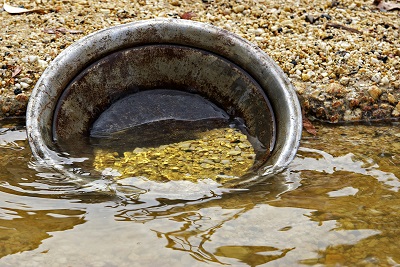 The rush was triggered by a speech held by the US President at the time, James K. Polk, in which he confirmed the existence of easily minable gold deposits in California to legitimise the US-Mexican War that had been waged shortly before and resulted in the conquest of California.
The rush was triggered by a speech held by the US President at the time, James K. Polk, in which he confirmed the existence of easily minable gold deposits in California to legitimise the US-Mexican War that had been waged shortly before and resulted in the conquest of California.
The entirely uncontrolled influx of gold miners caused vast problems such as epidemics and rat infestation. The mercury used in the mining – allegedly more than 7,000 tons – massively poisoned rivers and groundwater and endangered the health of residents. The indigenous population suffered most. Due to disease and displacement, 119,000 of the 150,000 indigenous people died within a few years. As a direct result of the gold rush, California became the 31st US state on 9 September 1850 and was later given the official nickname “Golden State”.
Colorado Gold Rush: from 1858 to the 1870s
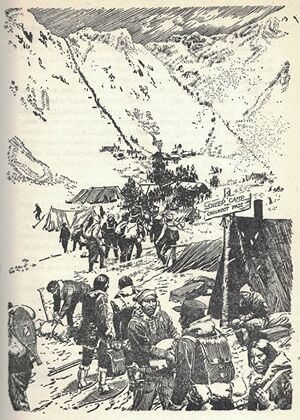 The run on what is now the “Colorado Mineral Belt” off the Rocky Mountains was triggered by the report of a Cherokee woman whose tribespeople had discovered gold in an arm of the South Plate River. Her husband, a white miner, set out with a group of like-minded men to search the stream. They struck gold deposits in June 1858.
The run on what is now the “Colorado Mineral Belt” off the Rocky Mountains was triggered by the report of a Cherokee woman whose tribespeople had discovered gold in an arm of the South Plate River. Her husband, a white miner, set out with a group of like-minded men to search the stream. They struck gold deposits in June 1858.
Newspaper reports and word of mouth quickly triggered a sustained gold rush that led to the settlement of several new towns, among them Denver. These towns, most notably the mining settlement of Telluride, became home to thousands of prospectors, but also provided shelter for wanted criminals – among them Butch Cassidy. The strong influx led to the founding of the 38th US state of Colorado in 1876.
The Montana Gold Rush from 1863 to the late 1860s
A group of miners discovered gold in Alder Gulch, a small town in Ruby River valley in Madison County, Montana. The town of Bannack, located 80 miles away, became the gold miners’ base, and in 1864, it also became the first capital of Montana before it was changed to Virginia City the following year.
Alder Gulch was not the only location of the region with gold deposits: in 1865, four prospectors called “The Germans” discovered vast quantities of the precious metal on the Montana Bar near the town of Helena. The estimated amount of mined gold during the heyday of the Montana Gold Rush would be worth around to US$637 million today.
The Black Hills Gold Rush into the late 1870s
A missionary reported to have seen indigenous people from the Sioux tribe transporting gold from the Black Hills in Dakota Territory in the 1860s. Little more than a rumour, it was enough to lure prospectors to the area. The Black Hills were, however, part of the Sioux territory by treaty with the US government and its people did not give up their land without a fight.
Large-scale gold mining happened only after Lieutenant Colonel Custer had taken over the Black Hills with over 1,000 troops in 1874. Gold deposits in Deadwood Gulch proved to be particularly productive, luring thousands of prospectors. They founded the settlement of Deadwood, which grew from 400 to 5,000 inhabitants within a few months.
Alaska: gold rush on the Klondike River from 1896 to 1898
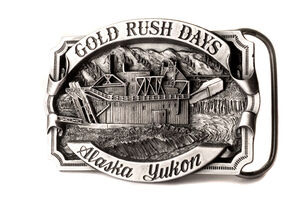 The far north of the US also saw mass immigration by gold seekers: from 1896, more than 100,000 flocked to the Klondike River near the town of Dawson. Their herd-like movement was likened to that of buffalo and cattle, earning them the derogatory nickname “stampeders”. To ensure that human tragedies like those of previous gold rushes on US territory were not repeated, the US government obliged each prospector to carry equipment and food for an entire year.
The far north of the US also saw mass immigration by gold seekers: from 1896, more than 100,000 flocked to the Klondike River near the town of Dawson. Their herd-like movement was likened to that of buffalo and cattle, earning them the derogatory nickname “stampeders”. To ensure that human tragedies like those of previous gold rushes on US territory were not repeated, the US government obliged each prospector to carry equipment and food for an entire year.
The gold rush led to the establishment of the Yukon Territory as well as the demarcation of the border between Alaska and Canada at the Klondike River. Despite the relatively short duration of the region’s gold fever, around 570 tonnes of gold have been extracted in the Klondike area to date, to a current equivalent value of more than US$32 billion. The Charlie Chaplin silent movie classic “Gold Rush” is based on the Klondike events.
Crazy Down Under: Australia and New Zealand in the 19th century
 It all began with an extraordinary find: on 12 February 1851, British explorer Edward Hargraves recovered a block of gold quartz in a river near Bathurst containing no less than 40 kg of gold. Daunted by the uncontrolled US gold crazes, the Australian government tried to inhibit reporting of this first significant gold discovery, but further discoveries of gold deposits made it impossible to contain the news. Bendigo, Ballarat and Mount Alexander also became destinations for fortune seekers over the course of the year. In the later 19th century, discoveries were also made in Temora in North South Wales, as well as in Teetulpa, and Coolgardie.
It all began with an extraordinary find: on 12 February 1851, British explorer Edward Hargraves recovered a block of gold quartz in a river near Bathurst containing no less than 40 kg of gold. Daunted by the uncontrolled US gold crazes, the Australian government tried to inhibit reporting of this first significant gold discovery, but further discoveries of gold deposits made it impossible to contain the news. Bendigo, Ballarat and Mount Alexander also became destinations for fortune seekers over the course of the year. In the later 19th century, discoveries were also made in Temora in North South Wales, as well as in Teetulpa, and Coolgardie.
The gold deposit at Mount Alexander proved the most yielding. In 1852, it was classified as the world’s largest gold. In the mid-1850s, Australian gold fever reached its peak when Californian prospectors, as well as British and Chinese gold seekers, immigrated to Australia in large numbers. Within just a decade, the Australian population increased tenfold to 1.2 million, leading to the development of the former British convict colony into a sovereign Commonwealth state.
The 1860s New Zealand Gold Rush
When the discovery of gold in the Otago region of New Zealand made headlines in 1861, many prospectors in Australia decided to move to the neighbouring island, as Australian gold deposits were already predominantly in the hands of large mining companies exploiting prospectors as cheap labour. The gold deposit in Otago proved to be extremely productive, with more than 60 tonnes of gold mined there within only three years.
Vast numbers of gold prospectors were drawn to the west coast in what is now known as the West Coast Gold Rush. The small town of Hokitika became the most populous settlement in New Zealand in 1866 with 25,000 inhabitants. The first gold rush on the North Island followed in 1867, and in 1869, the last significant outbreak of gold fever occurred in Kaori near Wellington, although it lasted only a short time due to low gold deposits.
The South African Gold Rush: the Mineral Revolution
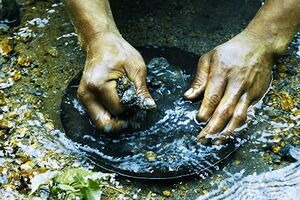 In 1886, rumours of the discovery of a modern-day El Dorado in the Witwatersrand area made the rounds. Compared to previous gold rushes, relatively few prospectors were drawn to the region. Those that did bought up the local gold mines and hired workers to do the mining at low wages. Self-employed prospectors were a rarity. To this day, the Witwatersrand goldfield is considered by far the largest of its kind and the gold rush it caused laid the foundation for South Africa’s largest city, Johannesburg. Its population rose to over 100,000 within just ten years. Around 1900, what was then the Transvaal Republic was considered the world’s largest gold producer. Speaking of the republic: the Witwatersrand Gold Rush is historically significant, as it was crucial to shaping South Africa as a country: the “Mineral Revolution” sparked the unification of the patchwork of agricultural republics into an industrial nation.
In 1886, rumours of the discovery of a modern-day El Dorado in the Witwatersrand area made the rounds. Compared to previous gold rushes, relatively few prospectors were drawn to the region. Those that did bought up the local gold mines and hired workers to do the mining at low wages. Self-employed prospectors were a rarity. To this day, the Witwatersrand goldfield is considered by far the largest of its kind and the gold rush it caused laid the foundation for South Africa’s largest city, Johannesburg. Its population rose to over 100,000 within just ten years. Around 1900, what was then the Transvaal Republic was considered the world’s largest gold producer. Speaking of the republic: the Witwatersrand Gold Rush is historically significant, as it was crucial to shaping South Africa as a country: the “Mineral Revolution” sparked the unification of the patchwork of agricultural republics into an industrial nation.
Is the dream of fast wealth real?
Famines and economic crises were major drivers of mass migration to supposed El Dorados, where hopefuls expected the gold to be theirs for the taking, either lying directly on the ground or easily washed out of the river water with a bowl. There are indeed documented examples of such effortless wealth, which overall was more wishful thinking than reality – but the idea remained tempting. To this day, individual gold prospectors still hunt for quick fortunes in remote areas of Alaska or Finland.
In the gold rushes of the 18th and 19th centuries, very few people actually attained significant wealth. Those who already brought capital into the venture and were thus in a position to employ the less affluent as cheap labour operated most profitably. Many of the poorest already died on the arduous journey to the gold regions or later succumbed to illness on site. For the majority of gold seekers, the dream of wealth remained just that: a mere dream.
Xetra-Gold Hotline

Do you have questions? We have the answers. Contact us here: 9 a.m.–6 p.m. CET
xetra-gold(at)deutsche-boerse.com
For press inquiries: media-relations(at)deutsche-boerse.com
